Understanding your customer stories and how they fit with your brand is often overlooked. But these experiences should mean everything to you if you truly want to drive a connection.
In the Game of Thrones series finale, Tyrion Lannister talked a great deal about stories. He said:
What unites people? Armies? Gold? Flags? Stories. There’s nothing in the world more powerful than a good story. Nothing can stop it. No enemy can defeat it.
Now, not everyone may have loved how the HBO series ended, but most of us can agree with Tyrion. Stories are incredibly powerful, not just in the entertainment world, but also in the realm of business and branding.
Storytelling helps you achieve various business objectives, including increasing customer engagement, generating buzz and driving sales. This guide will explore the power of narratives in ecommerce and shed light on how you can use them to your advantage.
Step 1: Understand Your Customers & Their Shopping Journey
In the same way that you wouldn’t share a murder mystery with a toddler, you never want to tell stories that don’t fit for your target customers. That’s why the first step to effectively work with customer stories is to get to know your audience and their shopping journeys.
What's one way to enjoy the weekend without harming the environment? 🌲
— Dr. Bronner's (@DrBronner) June 14, 2019
Dr. Bronner’s knows their customers are likely eco-friendly consumers, so this question fits right in with their demographic. Gather insights into who your customers are and what they go through when they consider products or brands.
Creating Audience-Appropriate Stories
Let’s start with getting to know your audience. Being keenly of your customers’ demographic and psychographic profiles will allow you to determine the right themes, languages and people to use in your stories.
Here’s an excellent example from Nutrisystem. Because Nutrisystem appeals to customers from different backgrounds and ethnicities, the company has several case studies on its website, with each story representing a specific customer group.
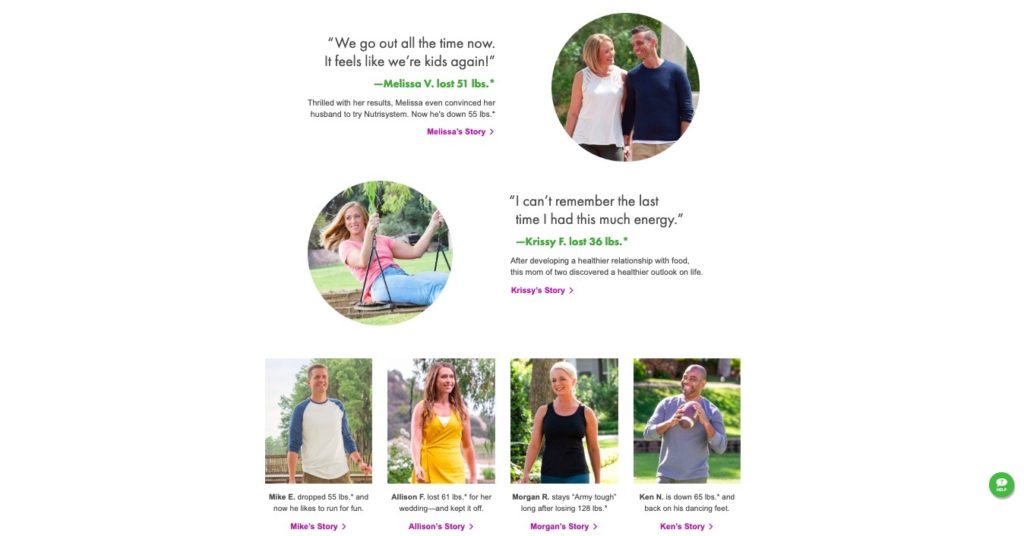
Sharing Stories Based on the Buyer Journey
In addition to getting the content right, you also need to make sure your stories are in line with the different steps your customers’ shopping journeys. A typical customer buying process starts by identifying a problem, which is then proceeded by research for solutions. Here’s where customers get to know different brands and compare specific products.
When crafting content, think about where a particular piece would fit in your customers’ shopping process. A brand’s origin story, for example, is great for customers who want to learn more about the company’s mission and values.
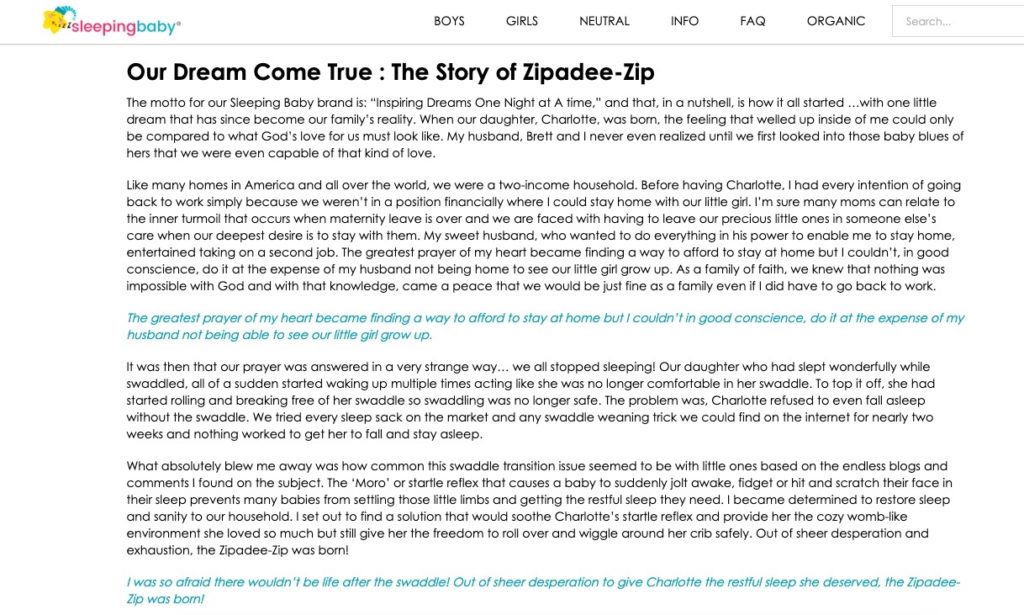
The “About” section of SleepingBaby.com details an authentic account of how the site’s innovative baby swaddles came into existence.
Meanwhile, shopper success stories or content about how customers solved their problems using a product are ideal when a buyer has identified an issue they want to fix.
Nutrisystem, again, is doing this well. Its customer stories are results-oriented, and each case study details the issues that the user was having prior to using Nutrisystem, as well as the results they’ve achieved after.
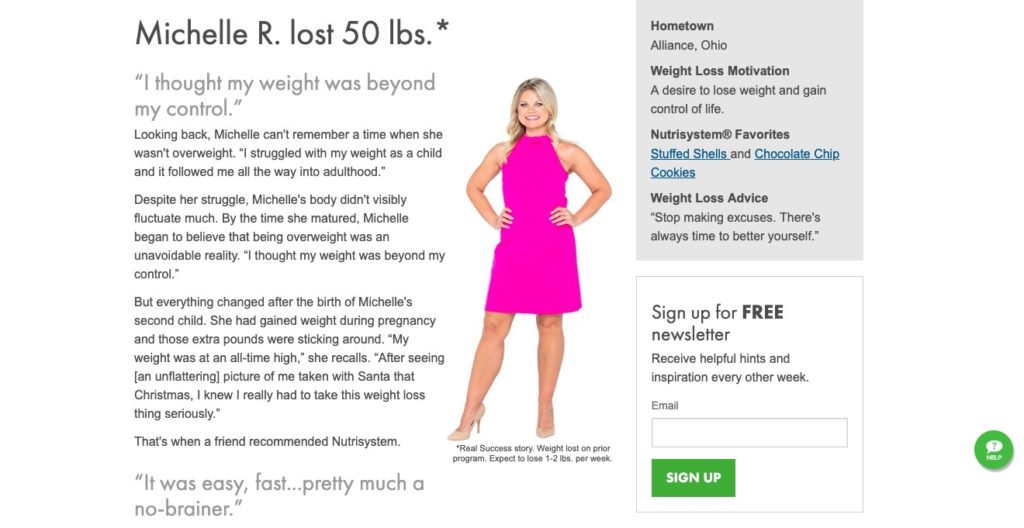
Product reviews, on the other hand, work best for shoppers who are comparing different items. In many cases, these customers already know they want to make a purchase, but are trying to decide on the right brand or product type to get (e.g., large or small, classic or trendy).
Be sure to think about the different processes that your customers go through when making purchase decisions, and then craft stories for each stage of the buyer journey.
Step 2: Determine the Storyteller
Customer stories aren’t always coming from George R.R. Martin. That’s why you also need to figure out the right storytellers for your brand. Who will tell your customer stories?
Businesses generally have two options here: the company can tell the story itself or it can let its customers do it.
Option 1: Share the Stories Yourself
The main benefit of telling your own brand or customer stories is it lets you control the narrative. Plus, you present your messages in a way that’s harmonious with your other branding efforts. This creates a consistent experience for your customers as they move from one channel or touch point to the next.
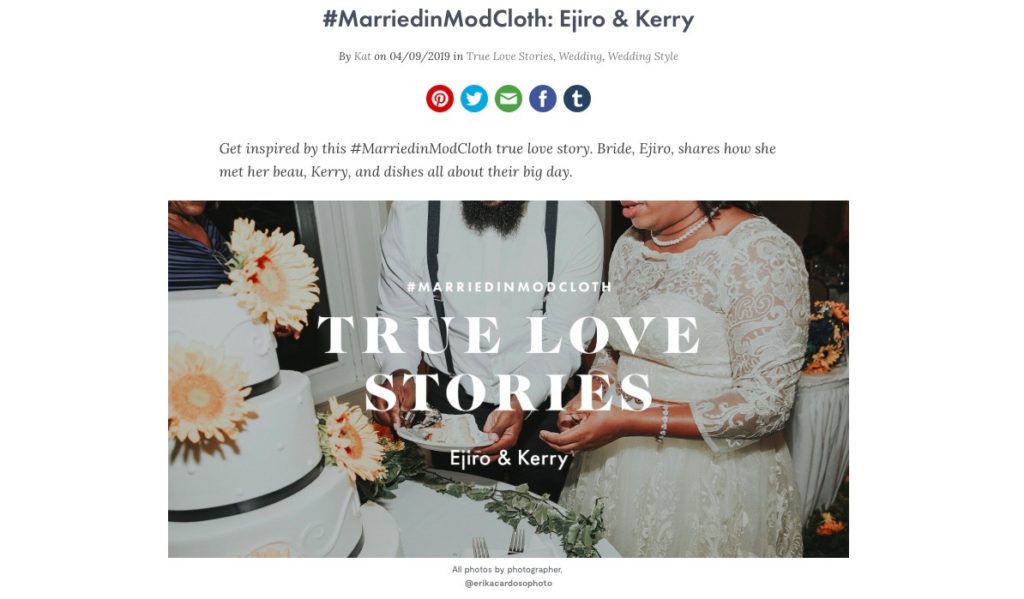
We can see this in action in ModCloths’ #MarriedinModCloth series. To promote its wedding dresses, the retailer showcased the true love stories of its customers who got married wearing ModCloth merchandise.
The stories were shared on its website and social media. Because the content was created by ModCloth, the look and feel of the series was consistent to its own brand all throughout.
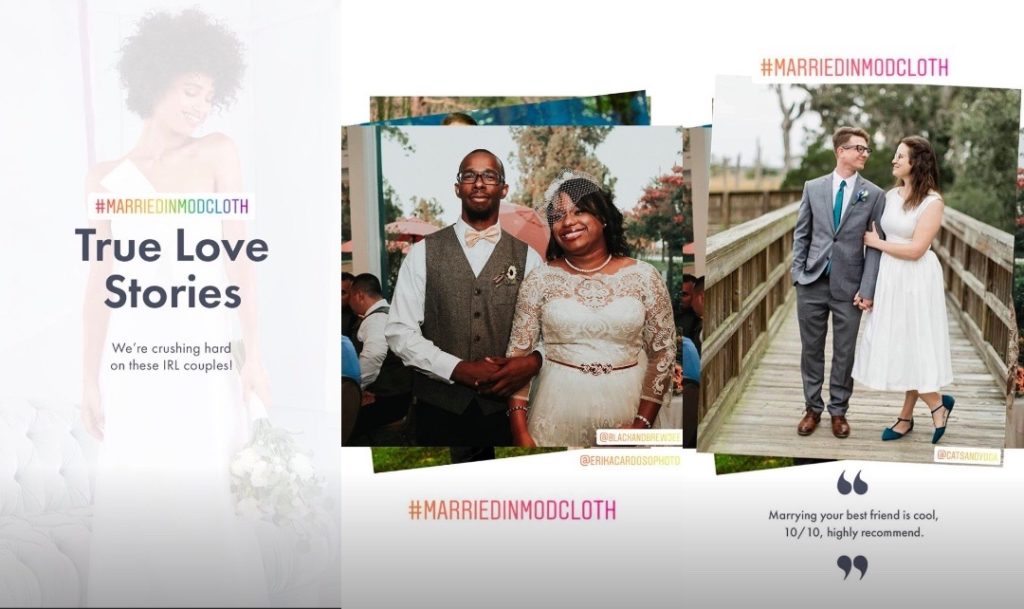
Option 2: Let Your Customers Share Stories for You
Being consistent and “on brand” is great, but too many branded or polished stories come off as inauthentic. You also need to balance out your initiatives by having stories that come directly from your customers.
In other words: leverage user-generated content. Luckily, UGC comes in various forms and each piece of content typically serves a specific purpose.
Consider the following forms of UGC to empower your customers’ voice to the fullest extent:
Content From Ratings & Reviews
One of the most common types of user-generated content is through ratings and reviews. This type customer content is particularly helpful for those who are in the deciding stage of their buyer journey.
Ratings and reviews help highlight specific product features, pros and cons and ultimately the entire customer experience, which is their own unique customer story. Make ratings and reviews a key component of your product pages and ensure that customers can easily find and browse the content.
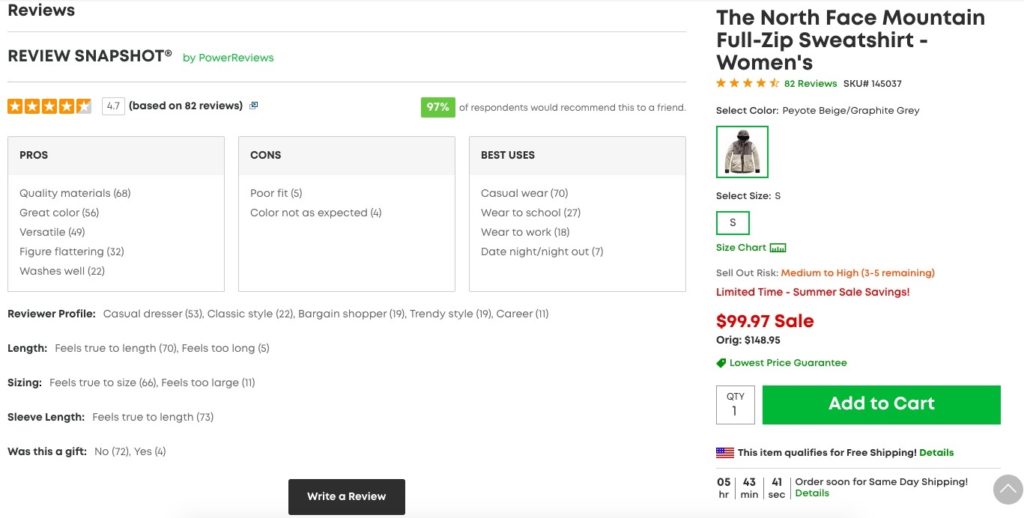
Evo, a retailer that sells outdoor apparel and accessories, does just that. Ratings and reviews are key components of its product pages.
In addition to always having the star rating visible on the page, Evo also uses PowerReviews‘ Review Snapshot platform to summarizes a product’s key components by sifting through previous reviews.
Content From Social Media Posts
A picture is worth a thousand words, right? So why not use visuals to help tell stories?
Collecting user-generated content from social media is what most people know about, but don’t fully understand how to effectively use. This isn’t to point fingers, but instead, to highlight the capabilities of collecting visual and social content through tools like PowerReviews.
Customers commonly tell their stories on social media, and the common practice for brands is Retweet, Regram or republish their content on your own social channels. One of the biggest believers in sharing UGC as stories on social is GoPro.
https://www.instagram.com/p/Byu0HEBHW2b/
But how can you use visual UGC from social media to tell even better stories?
Move their social media content to your product pages.
Social Collection allows brands to gather user-generated content from their shoppers. Whether it’s from a branded hashtag or a tagging feature, our tools collect, authenticate and gain permissions to share customers’ social content of your products on your own product page.
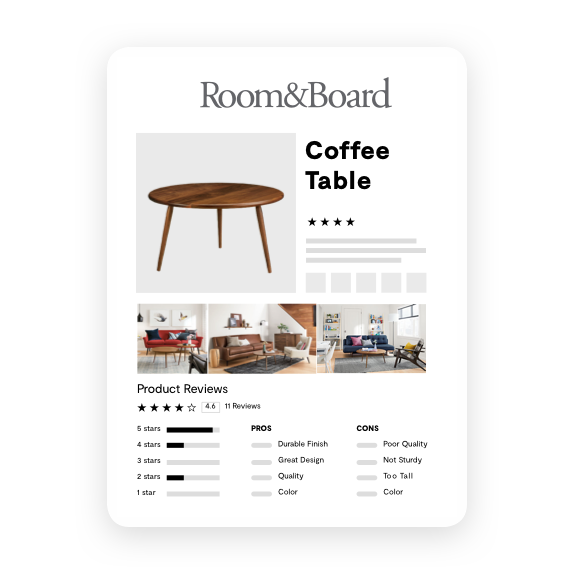
Product pages with visuals tell a more robust story and provide your shoppers with authentic images and video to make a better purchasing decision. In fact, data from CrazyEgg showed the average piece of user-generated content is viewed 10 times more than branded content.
That’s huge.
Try to connect your customer stories where they have the most impact.
Step 3: Craft the Story
We’ve talked about the types of stories to tell, now let’s discuss how you to craft them. There’s not a single “best way” to come up with your own brand story. And the right method for you will depend on the type of story you want to share.
But here are some general pointers to keep in mind when you’re crafting your brand story:
Tip 1: Select the Right Customers
When deciding on which customers to feature, set your sights on those who are already big fans of your brand. You can do this by:
- Identifying High NPS Customers: If you conduct your NPS surveys, go through the scores of respondents and take note of your brand’s Promoters with an NPS score around 8 to 10. These customers are more likely to respond to your requests and be happy to share their experiences.
- Turning to Social Media: Another option is to identify your biggest social media fans. These individuals want to be social influencers for your brand and can talk about you as well as any of your employees. Additionally, you can run product sampling campaigns to find these influencers who have awesome things to say about you.
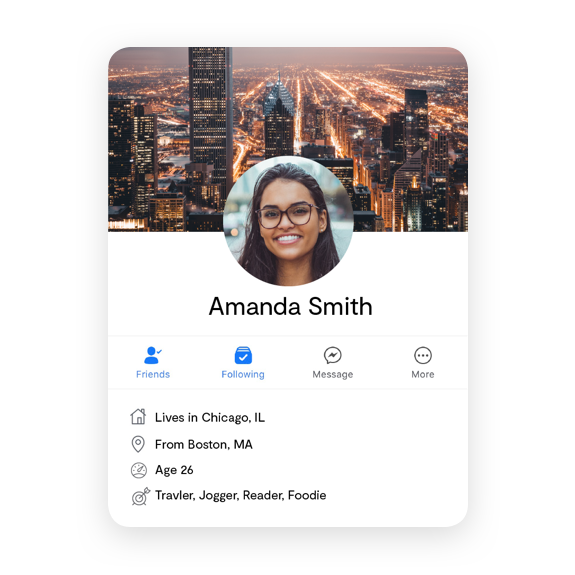
Tip 2: Let Customers Narrate Their Experience in Their Own Way
The best way to interview your customers is to let them do most of the talking. Try not to ask overtly leading questions and let your interviewee share their thoughts in their own way.
If you want to get authentic customer feedback, try using a mystery shopping program to collect their experiences. With the help of tools like Journey IQ, brands and retailers turn mystery shopping into a fun way for customers to go on missions to collect intel on their experiences.
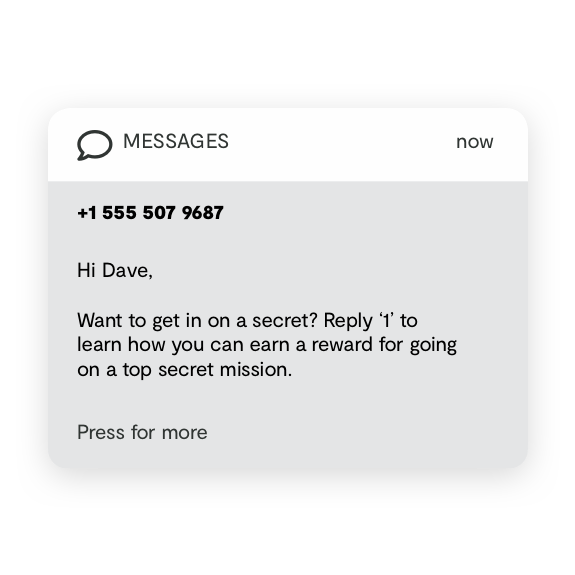
Journey IQ makes mystery shopping much more affordable by using shoppers who already buy from you on a regular basis. Then you incentivize these shoppers to write detailed feedback about their customer experience–all for an incentive like a discount on a purchase.
Typical mystery shoppers each cost hundreds of dollars to participate, but with Journey IQ, you rely on those who already regularly shop from you.
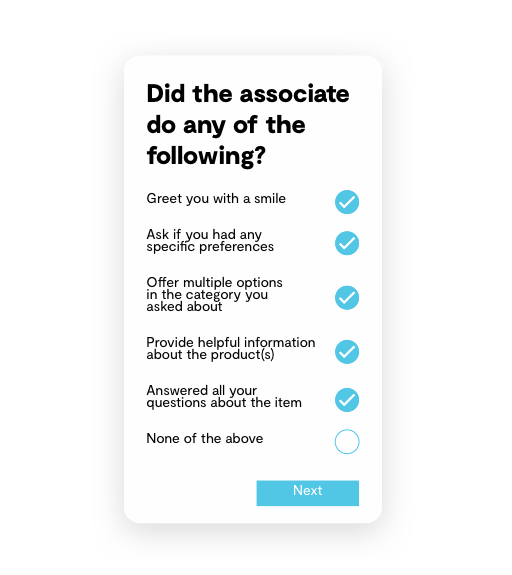
Step 4: Package Your Customer Stories Nicely
Once you have the information you need, the next step is to package all those details into a story worth sharing. Each case is different, but generally speaking, the best customer stories contain a healthy mix of the following:
- A few words for your company
- Direct quotes from your customers
- Images and/or videos
For inspiration on how to do this, check out the lingerie retailer ThirdLove. The company regularly spotlights interesting customers through a blog series titled #ThirdLoveStories.
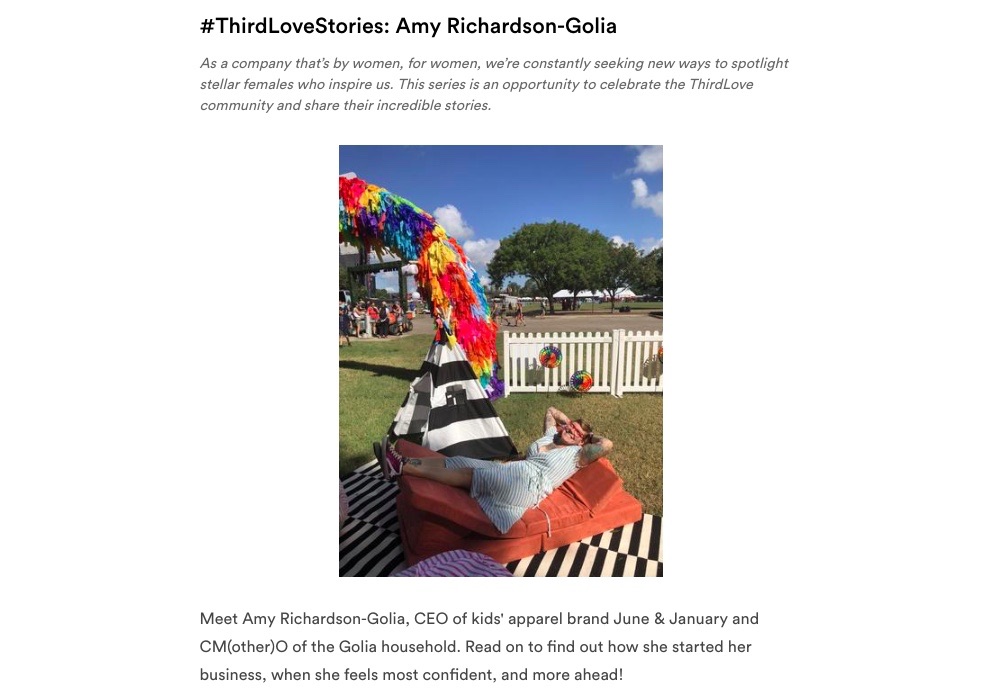
And while these posts mention ThirdLove’s products and features, most of the content is dedicated to telling the customer’s story — i.e., what inspires and drives them and how they’ve achieved success.
Looking to get more customers to tell their stories? Here are a couple of ways to encourage people to generate content for your brand.
Prompt People to Do It
The best way to get people to submit content is to prompt them. Send out review requests if you want shoppers to share their product feedback.
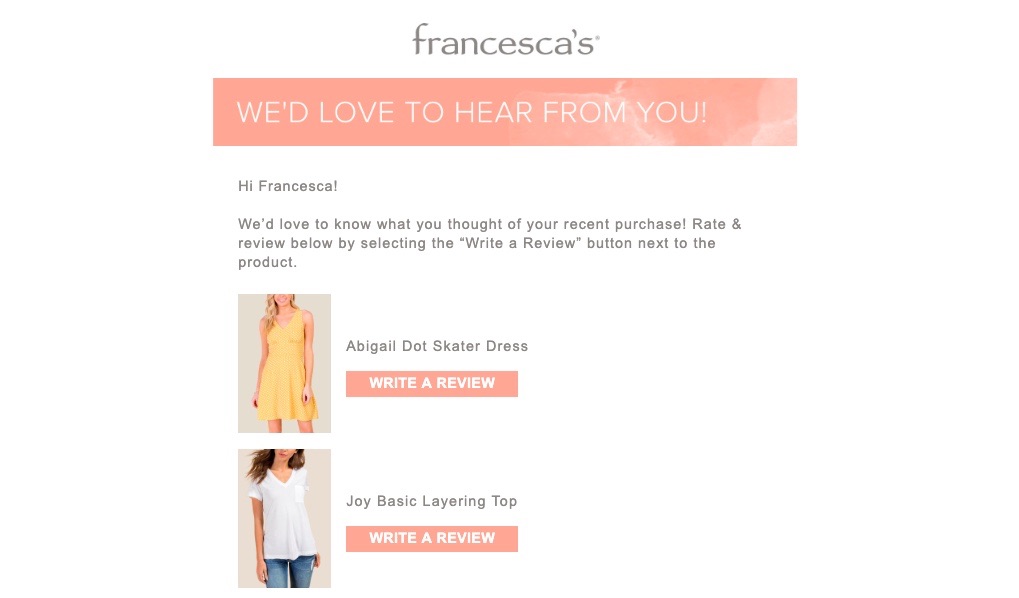
If you’re beefing up your social UGC, then make sure people know that you’d love to see their posts. Use a special hashtag or better yet, publish posts on social media encouraging your followers to share their posts.
The North Face, for example, uses the hashtag #NeverStopExploring.

Give Out Incentives
If your UGC strategy needs a boost, consider using incentives to entice your customers to create and share content. You could try gamifying the process by having prizes up for grabs when people review your products or share social media content.
Have a look at what the motivation app Shine is doing. The company is running a 30-day giveaway where they award daily prizes to users who share and tag Shine in their Instagram content.
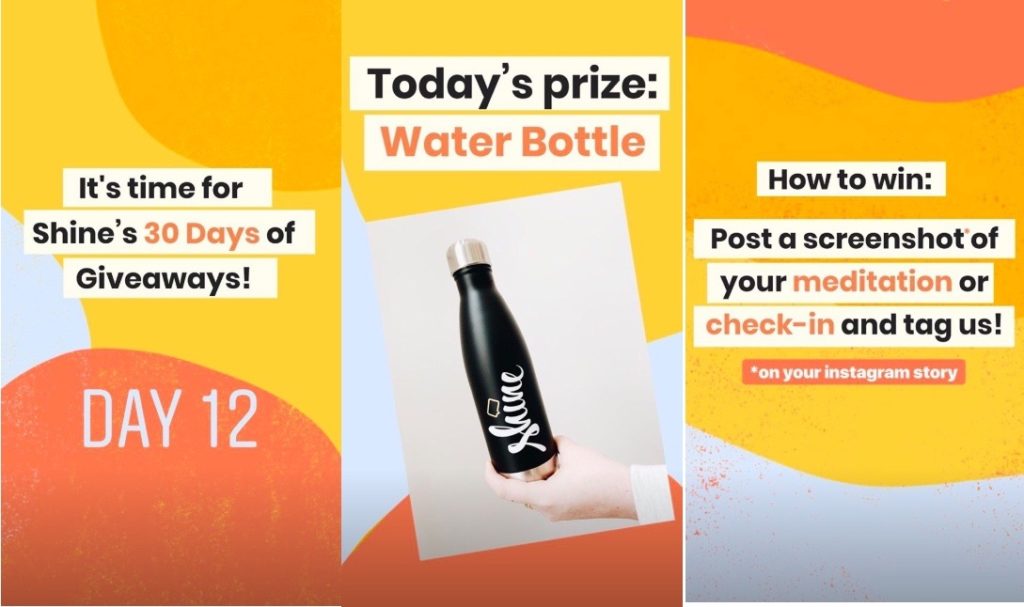
Step 5: Put Your Stories Out There
Once you have your stories, move on to distributing the content in front of the right audience. Here are some ideas and examples of how to accomplish this:
Leverage Your Website
Your website is one of the best places to tell customer stories. As mentioned earlier, using your own assets gives you more control, which means you can pretty much dictate the look and feel of the content, as well as the publishing schedule.
Another benefit of housing customer stories on your website is having access to data. If you’re using software like Google Analytics, you can easily track page views, traffic sources and conversions. These metrics offer valuable insights into the stories that work and what could be improved.
Where do you put this content on your website? Try the following locations:
- Homepage: Want to put your customers front and center? Display quotes or testimonials on your homepage to let visitors quickly see what people are saying about your brand. Athletic Green’s homepage features stories and quotes from select customers.
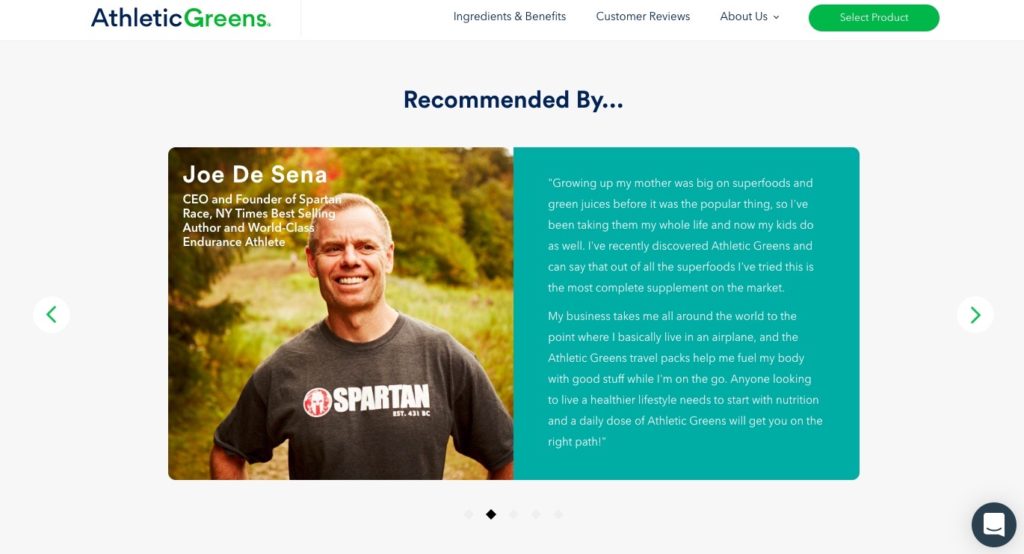
- Site Navigation: Several brands use specific landing pages labeled “Stories,” “Testimonials” or “What Our Customers Have to Say.” The objective is to keep the content in one place to keep the experience easy to navigate and find. For example, Belly Bandit has a “Moms Who Made It” section dedicated to posts about its customers.
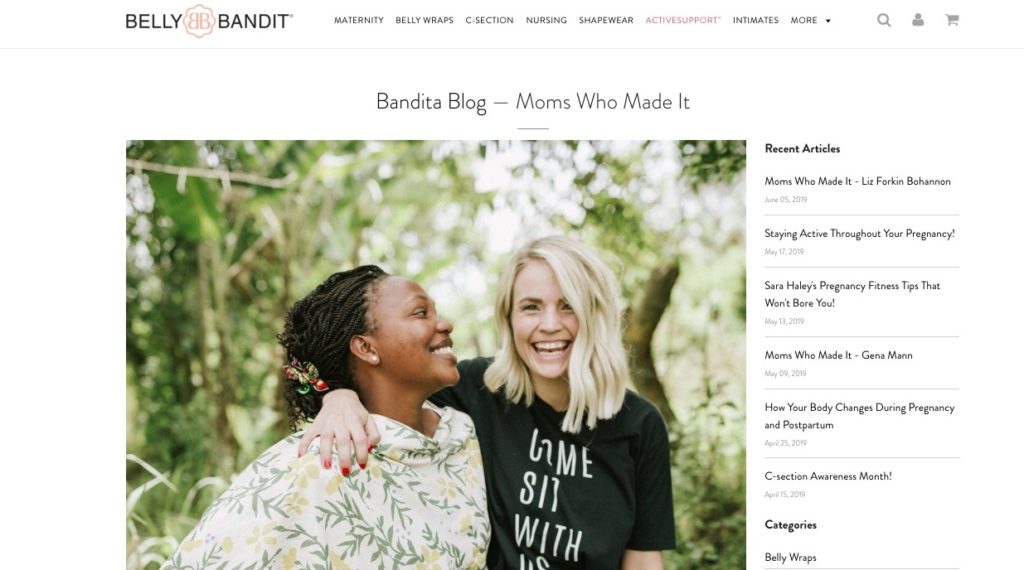
Leverage Social Media to Re-Share Customer Content
Already got people talking up your brand on social? Like we mentioned earlier, simply repost their content through your own account to give credit to awesome visuals, tell better stories and to build a more loyal community.
This is one of the easiest ways to spread stories on social networks because you can do it with just a few clicks. The sustainable makeup brand Thrive Causemetics regularly reposts content from its users.
https://www.instagram.com/p/ByDX74ig1Qg/
Turn Customer Quotes Into Shareable Images
If you already have input from loyal patrons, repurpose their testimonials for social media by creating images using their quotes. Need some examples to help you out? Check out Celsious, a hip and modern laundry mat in New York, that commonly uses Instagram to promote customer experiences in a more visual context.
https://www.instagram.com/p/BwPWeEFFSTc/
Use Email to Showcase Stories
Email is another excellent medium for sharing stories. Just like with your website, you have a lot more control over how the stories appear in your messages. And since subscribers have to opt-in, you’re speaking to a relatively warm audience.
So, find opportunities to share customer stories on social media. Try incorporating them into your nurture sequences and newsletters.
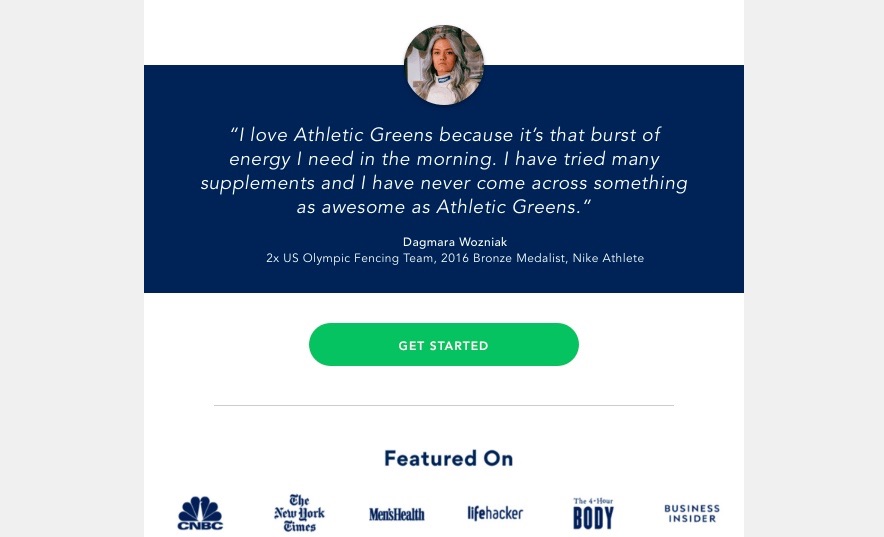
Athletic Greens, once again, does this really well. Nearly all of its emails mention a customer story or testimonial, which helps portray a better narrative for its brand.
Tap Into the Power of Customer Stories
Customer stories are incredibly compelling. And for most brands and retailers, this content should be a part of every marketing strategy.
If you haven’t tapped into the power of storytelling yet, it’s high time to do so! Need help doing that?
PowerReviews’ solutions for ratings, reviews and social content could take your initiatives to the next level. Request a demo to learn more!






